This London Flat is the Site of A Director's First Cinematic Love
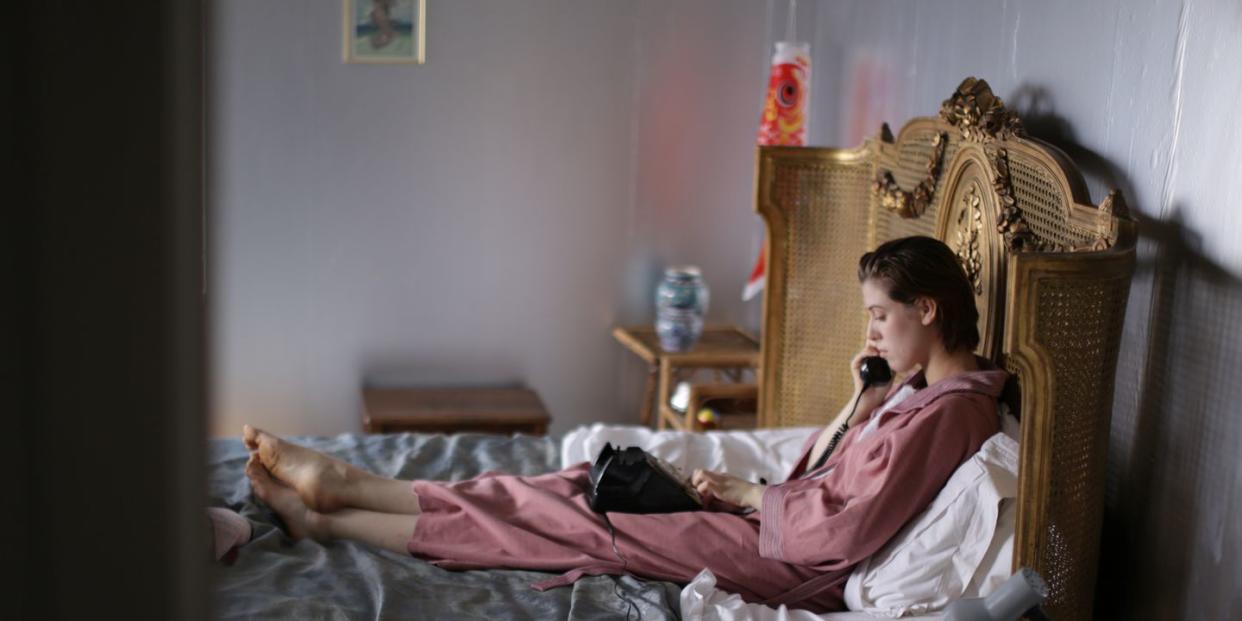
The themes of first love and a young artist’s creative evolution collide and meld in a London apartment in Joanna Hogg’s film The Souvenir. Set in the 1980s, with Thatcherism and IRA bombings in the backdrop, The Souvenir, out now, follows Julie (played in a breakout performance by Honor Swinton Byrne), a film student finding her voice who falls for Anthony (Tom Burke), a darkly mysterious man wrestling with questionable demons. As Julie tumbles deeper into her romance with Anthony, she finds herself at odds with the warm comfort of her mother (played by Byrne’s real life mom, Tilda Swinton).
Much of the film takes place in Julie’s Knightsbridge duplex, teeming with books, where Julie and Anthony cook, eat, sleep, have sex, and experience all of the rollercoaster highs and lows of their tumultuous relationship. The Souvenir is loosely inspired by Hogg’s own student years-but the London flat in the film is a near recreation of Hogg’s apartment from that time. Hogg enlisted production designer Stephane Collone to build a replica of the interiors, based on Hogg’s memory, on a RAF aircraft hanger. Here, the writer-director discusses the process of bringing that flat to cinematic life.
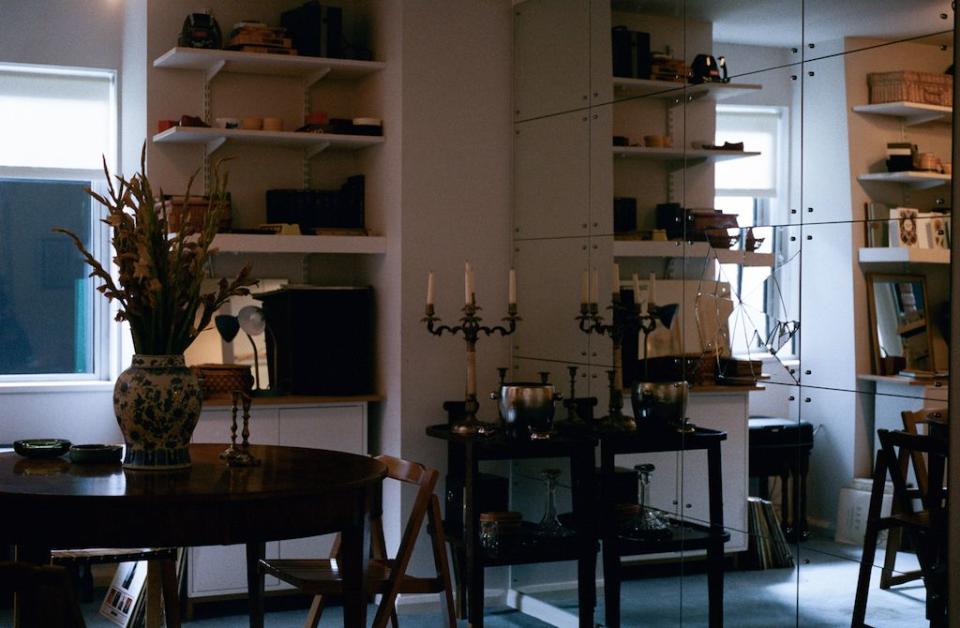
I understand Julie’s apartment was a recreation of your apartment from your student days. Can you talk about the process of shaping the space from your memory?
It was important right from when I first conceived the story, that the apartment called Flat L, be re-created. I planned to show production designer Stephane Collone the original flat but the current owners didn’t want to us to visit. So we had to rely on my memory of the space, a few photographs, and some very sketchy estate agent plans. This, in the end, was a blessing because piecing the flat out of my memory was a fascinating and powerful process.
The apartment in the film (and in your real life) was from early ’80s London. Can you call out some specific pieces (furniture, décor, etc.) that you used to bring this to life in an accurate way and where you found them?
I have kept some of my furniture from that time. For example, the gold bed in style of Louis XVI I had bought from auction in 1982 and the Leonardo trestle table designed in 1940 by Achille Castiglione, which Julie has at the beginning of the film, was bought from Conran in 1979. After a re-decoration in 1985, I lent the desk to my mother and she used it in her book bindery. I borrowed it back from her for the shoot. It was important to furnish the set of Flat L with these personal items. They were very much the key to accessing my memories and feelings from that time.
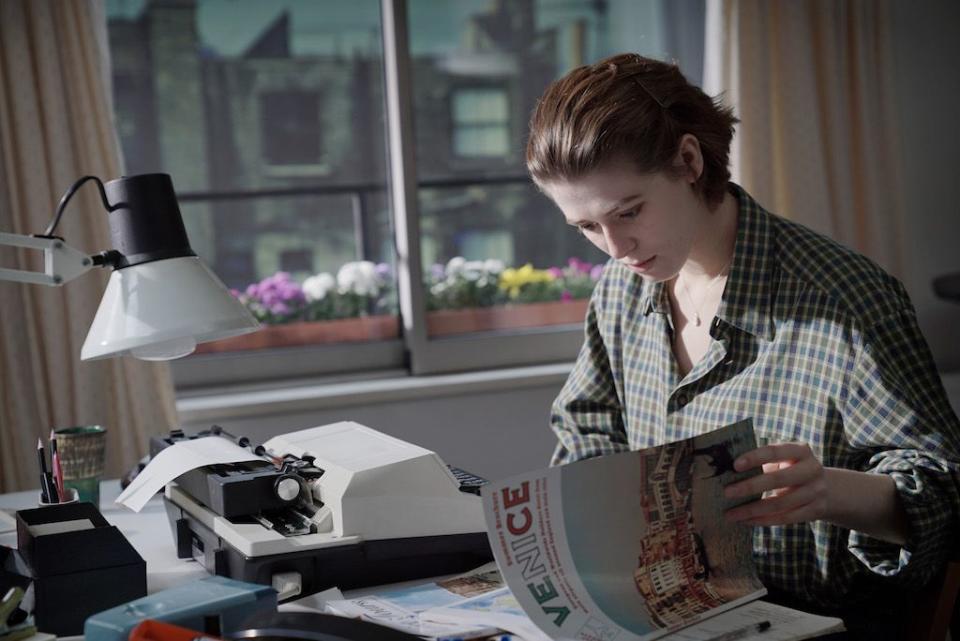
How long did it take to build the set for Julie’s apartment?
It was built over about four weeks. I visited the set often as it was being built. There was a crucial stage when there was only a framework for each floor of the apartment but still the ability to change the proportions. Stephane and I would walk around the set and it came back to me very quickly how the flat should be organized. For example, the kitchen was wider than I remembered so we narrowed it, and we changed the proportions of the hallway and lowered the window sills in the living room. It ended up feeling uncannily like my old apartment. Stephane, with his construction manager Paul House, built the two levels side by side. This constantly confused me as I’d walk up the stairs expecting to arrive in the living room. At the end of the shoot, the set was taken down and we stored it for The Souvenir: Part Two (currently in pre-production). Now it has been re-assembled and there’s a strange sense of deja vu as we prepare to shoot again.
The film has some autobiographical elements of Joanna’s life, but it is also fiction. How did you go about reflecting the real-life inspiration while also making the apartment feel like it belonged to the character Julie?
We had many actual objects that belonged to me and some that I remembered-the art department sourced film books and VHS tapes and the Ricard Water carafe and ashtray, for example. We encouraged Honor to bring some of her own personal objects and books, so she would feel at home there. She bought cushions, a patterned quilted bed cover, and some of her precious toy childhood animals.
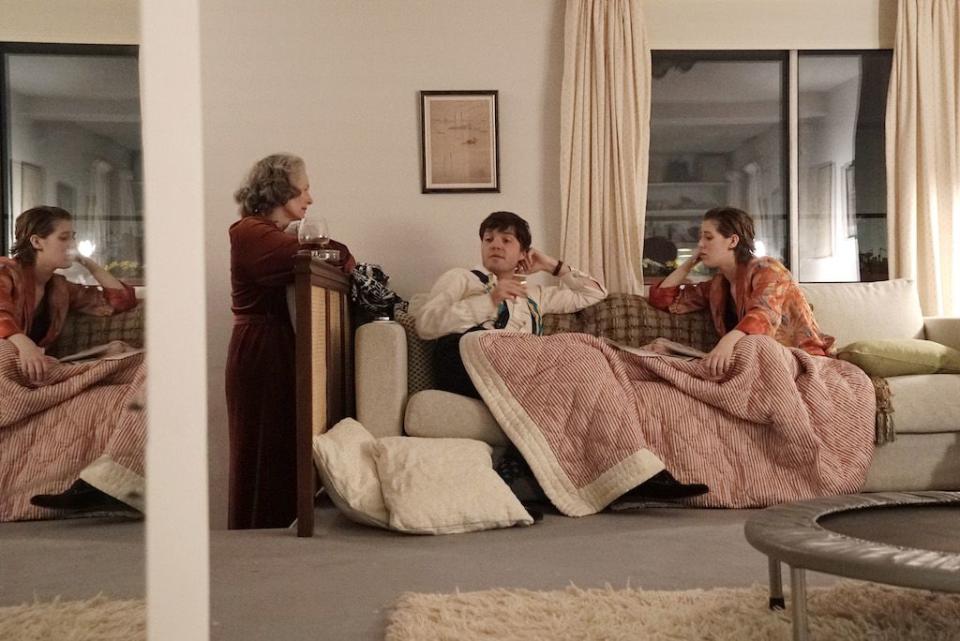
So much of what we see of Julie and Anthony’s relationship transpires in this apartment: in what specific ways does the design of the apartment also reflect the evolution of their relationship? And also reflect Julie’s personal evolution?
There were three distinct stages to the journey of the apartment over the duration of the story; at the beginning we see Julie’s creative life reflected in the objects lying around, the electric typewriter, the cameras, the Super 8 editing equipment. It’s a student’s apartment but there’s a modernity to her taste. I loved Memphis and Alessi and wanted Julie to embrace Italian design of the late ’70s and early ’80s. As Anthony becomes part of her life the cameras and the creative tools disappear and the decor becomes more sophisticated and grown up and even baroque. The gold bed and the glass chandelier from Murano appear after their trip to Venice. By the end of the film, there’s very little left of the student Julie; there's a silver candelabra, a Kelim rug, and a framed drawing of the Bridge of Sighs in Venice. Anthony has now taken over her life and there’s more of his presence in the apartment than hers.
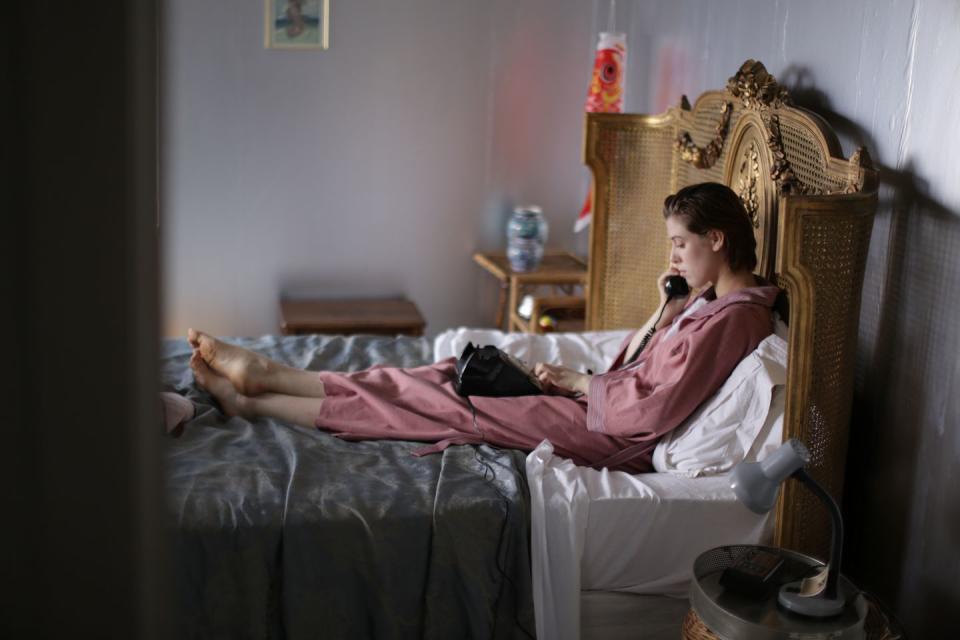
The layout of the apartment is such that we never get a wide angle view of the whole space, there are always rooms off camera. And the mirrors also distort our perspective on the space. Can you talk about why these were both important elements to using the apartment as the context for this intense romance and also Julie’s evolution as an artist?
The wall of mirror tiles and the silver foil on the walls of Julie’s bedroom were there in the original apartment where I lived. The flat was bought by my parents in 1979 and it had been very much a bachelor pad with these ’70s elements. Some details, like the wall of mirror tiles, I kept and liked and other details I removed over time to be replaced by a cleaner whiter look. In The Souvenir: Part Two, the apartment undergoes further evolutions as the story is taken to the end of the eighties decade.
('You Might Also Like',)

